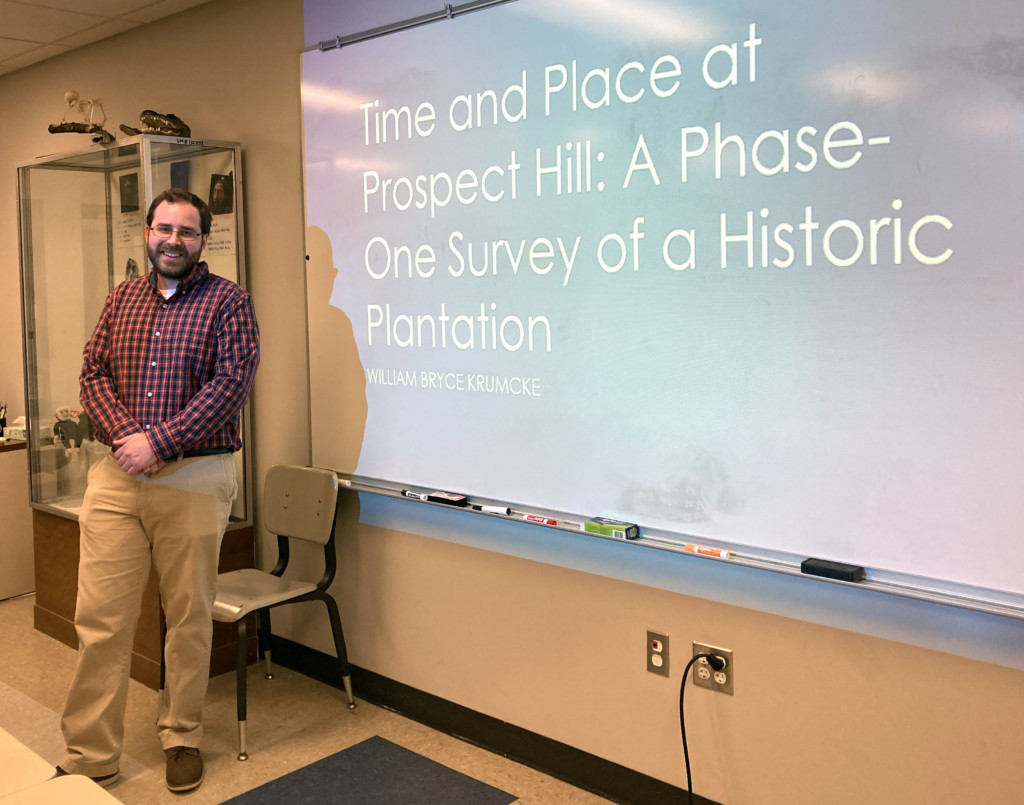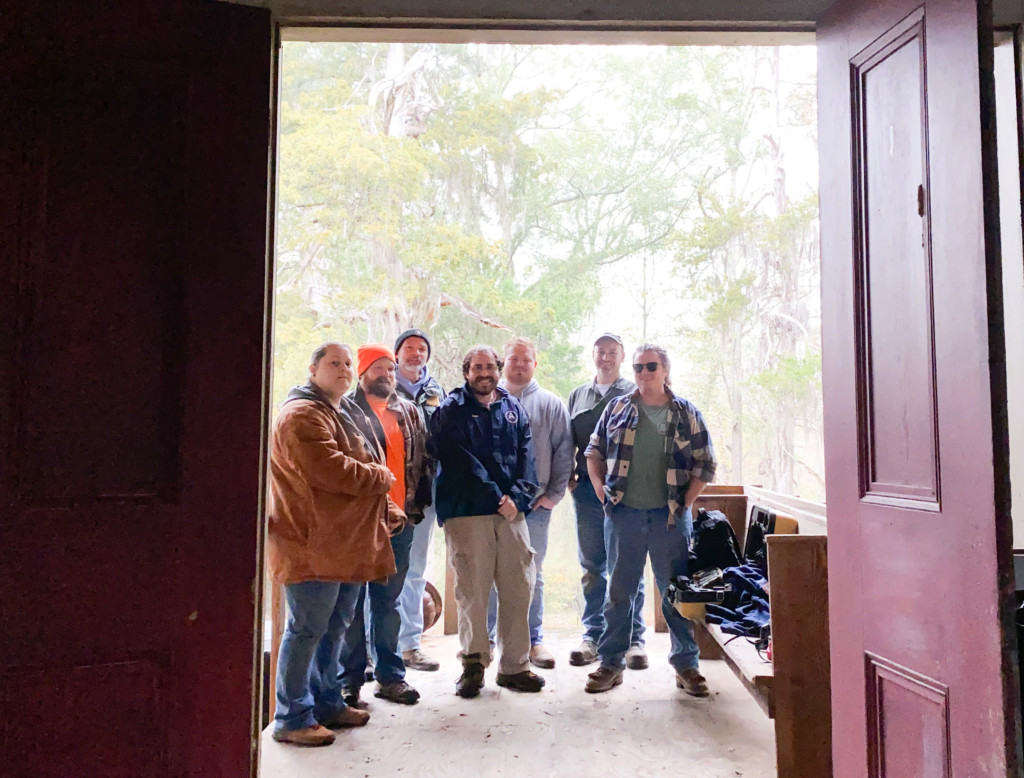The Archaeological Conservancy would like to congratulate Bryce Krumcke on his recent master’s thesis defense at the University of Mississippi. Bryce’s thesis research at Prospect Hill Preserve centered on using artifact distribution patterns to identify and analyze specific locations.
-

Bryce Krumcke presenting his master’s thesis defense at the University of Mississippi on June 24, 2021.
About Prospect Hill
Prospect Hill is 5,000-acre plantation site in southwest Mississippi originally owned by a South Carolina planter named Captain Isaac Ross. Ross purchased the property in 1808 and utilized slave labor to farm his cotton crop. In 1830, he co-founded the Mississippi chapter of the American Colonization Society, whose objective was to move enslaved people to a colony on the coast of Liberia that they called “Mississippi in Africa.”
Ross passed away in 1836 leaving instructions in his will to free the slaves who agreed to move to the Liberian colony. His heirs contested the will instigating years of litigation, until the Mississippi Supreme Court officially upheld it in 1845. That same year, a tragedy occurred at the farm where a young girl lost her life in a blaze at the mansion. At least four slaves were accused and brutally lynched as a result. In 1848, the plantation sold and around 300 enslaved individuals were freed and transported to the new colony.
To learn more about this remarkable story, be sure to read Alan Huffman’s book Mississippi in Africa: The Saga of the Slaves of Prospect Hill Plantation and Their Legacy in Liberia Today and watch the video below.|
Prospect Hill from Blue Magnolia Films on Vimeo.
A few years later, Ross’s heirs reacquired the property and continued to occupy the site until 1956. The Conservancy acquired and established Prospect Hill Preserve in 2011 to protect the important history at Prospect Hill for future research, such as Bryce’s thesis project.
Recent Research
-

Bryce and crew at the “main house” of Prospect Hill Preserve.
Bryce Krumcke’s thesis work at Prospect Hill included a survey of approximately 10 acres surrounding the main house. Artifacts identified during the survey were classified into two categories for analysis: chronological and functional. From this analysis, a series of patterns were discerned within the survey areas. This resulted in the identification of the probable kitchen area at the main house, as well as an area used by tenant farmers and as a residential area for the enslaved.
The main objective of Bryce’s project was to learn more about plantation’s spatial layout, and to gather archaeological evidence that shines a light on the lives of the enslaved people that lived there over 200 years ago.
Behind the Scenes at the 2020 Excavations:
Bryce’s thesis research demonstrates how archaeology can contribute to a greater understanding of the history at Prospect Hill, and his findings demonstrate great potential for future archaeological research. The Conservancy would like to thank Bryce for his work at the Preserve and congratulate him for his scholarly achievements.












